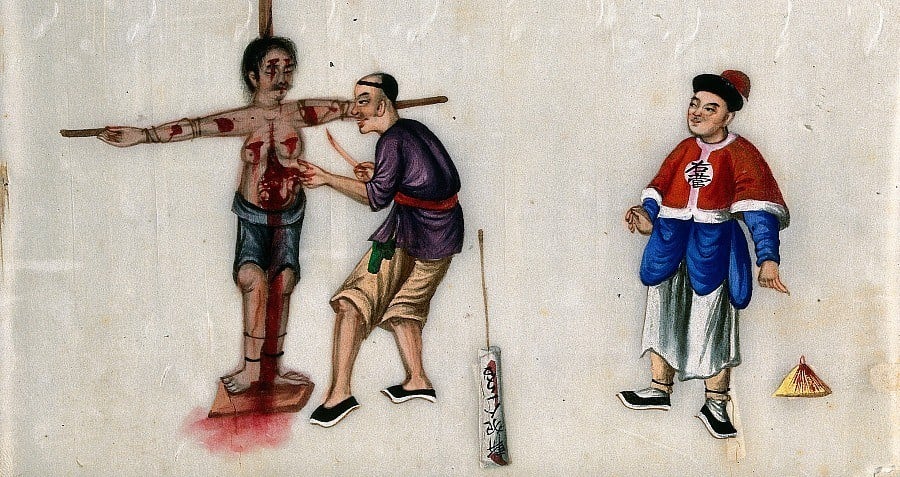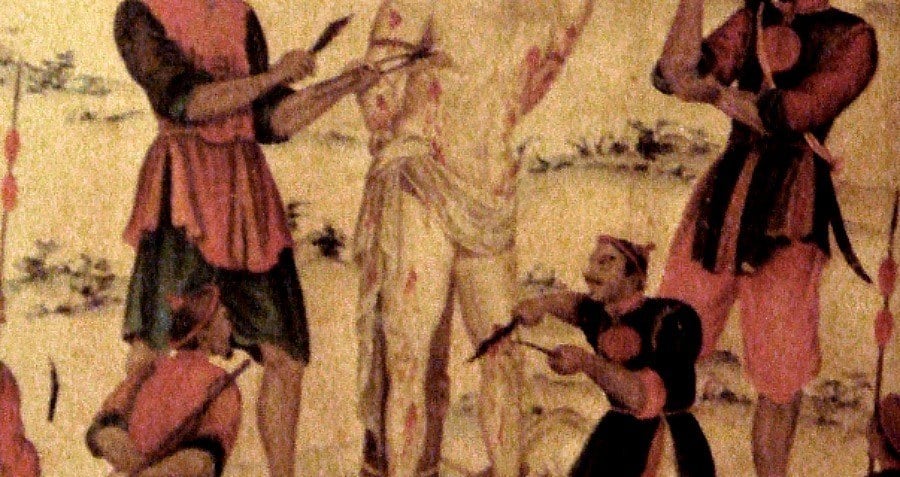The cut-by-cut torture method known as lingchi may have been in use for hundreds of years.

Wikimedia Commons
From the Tang dynasty until the final years of the Qing, a form of capital punishment set itself apart from the rest for its particularly cruel and brutal practices. The ancient Chinese torture tactic known as lingchi — which translates loosely to “slow slicing,” “lingering death,” or “death by a thousand cuts” — was used as a method of execution from the seventh century up until 1905, when it was officially outlawed.
As the name implies, lingchi was a drawn-out and brutal process, wherein an executioner would deliver justice to various lawbreakers by administering a series of cuts to the skin. Unlike most execution styles, which aim to kill sooner rather than later, the aim of lingchi was a long, slow punishment, intended to see how many cuts a person could withstand before dying, or simply losing consciousness.
The procedure was fairly straightforward, and called for the condemned person to be tied to a wooden post, unable to move or break free from their binds.
From there, the executioner would then administer cuts to bare flesh, usually starting at the chest, where the breast and surrounding muscles were methodically removed until the bare ribs were almost visible. Next, the executioner would make his way over to the arms, cutting away large portions of flesh and exposing tissue in an excruciating bloodbath before moving down to the thighs, where he would repeat the process.

Wikimedia Commons
By this point, the victim would have likely died and was then decapitated. Their limbs were also severed and collected to be placed inside of a basket. The act of dismemberment was said to punish the convicted both in this life and the next, as Confucian ideals prohibit the mutilation of one’s body.
As Chinese law didn’t actually specify any particular method of delivery, the act of lingchi tended to vary by region. Some accounts report that the punished were dead in less than 15 minutes, while other cases apparently went on for hours, forcing the accused to withstand up to 3,000 cuts.
These details would, of course, depend on the depth of each incision, as well as the skill level of the executioner and the severity of the crime.
Officials would sometimes take pity on those charged with lesser offenses, limiting their time spent suffering. Families who could afford to would often pay to have their condemned relatives killed right away, assuring that the first cut would be the last one, and sparing them from hours of brutal torture.

Wikimedia Commons
Not everyone was subject to die in such a cruel and unusual way, as lingchi was reserved for only the worst crimes, such as treason, mass murder, patricide, and matricide. However, anyone for whom the traditional methods of punishment did not apply were, unfortunately, sentenced to meet their maker in the cruelest of ways in these public executions.
While many ancient accounts of lingchi had likely been mythologized, fitting a sensationalized Western narrative which depicted the “savage” practices of the then-mysterious Chinese, one case provided photographic evidence of such cruelty.
The execution of Fou Tchou-Li by lingchi was captured on film. He was convicted in 1905 of murdering his master, a Mongolian prince, and was the last known execution by lingchi before death by a thousand cuts was outlawed only two weeks later.
Of course, the ancient Chinese were not alone in devising particularly painful forms of punishment. Don’t believe us? Check out the practice of defenestration, then discover the ten worst execution methods ever devised. Finally, read up on the five worst ways to die.






